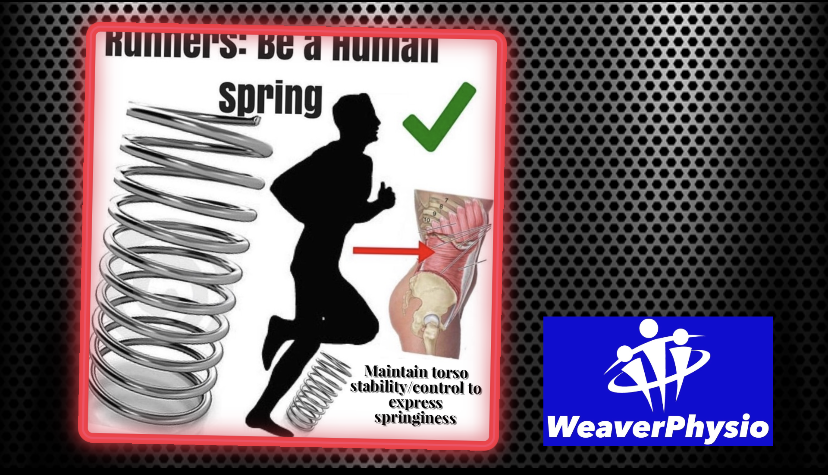A healthier workplace
March 11, 2020
HEALTHY WORKPLACE = HAPPY WORKPLACE

It turns out that a lack of exercise in our lives is a silent killer. The World Health Organisation lists physical inactivity as the fourth biggest risk factor for death in adults across the world.
The latest research shows when it comes to heart disease, leading a sedentary life is as great a risk factor as smoking and obesity. In fact, inactivity in terms of disease risk, is more dangerous than being overweight.
If you spend long periods of time sitting, this is particularly bad news, as it increases your risk of heart disease, obesity, diabetes and cancer. The most current research has shown that even normal weight individuals that are inactive, are at risk of developing disease. There is a molecular pathway that is essential to burning fats, that shuts down with inactivity, and that subsequently increases your risk of developing heart disease.
And unfortunately you can’t bank the benefits of exercise from your youth, hoping it will help you 40 years down the line. The ideal scenario is to have been active throughout your lifespan, but research has shown that your health can benefit from physical activity at any age, meaning it doesn’t matter when you start, as long as you start!
Physical activity performed regularly, can help to prevent and manage over 20 chronic medical conditions. These include coronary heart disease, stroke, type 2 diabetes, cancer, obesity, mental health problems and musculoskeletal conditions.
And the good news is that we can combat the negative effects of prolonged sitting (total of 8 hours or more) with just 60-75 minutes of moderate intensity physical activity a day.
The reality is that hectic schedules can make it seem impossible to fit workouts into your busy week. The prospect of packing a gym bag, trudging to your local gym, working out, showering, changing, and trudging back to where you came from, can feel like a lot of effort.
But when we neglect exercise, we not only put both our physical and mental health at risk, but we also negatively impact our productivity and effectiveness at work.
And you would be surprised at the number of opportunities there are in a working day, to increase your activity levels. This doesn’t have to mean running or cycling to work, although that’s great if you can, but you can in fact accumulate activity that is beneficial to health, in lots of different ways during the day.
Which is why we’ve put together a collection of resources to help you achieve this.
At the following link you can download leaflets, exercise handouts and infographics on the following topics.
- 17 Ways to Be More Active at Work
- Thinking on your Feet - Why it Pays to Be Physically Active at Work Client Newsletter
- Stretching Exercises for the Workplace
- Strengthening Exercises for the Workplace
- Why Posture Matters
- Optimal Desk Posture Infographic
- Carpal Tunnel Infographic
- Preventing and Treating Carpal Tunnel Syndrome
- Carpal Tunnel Rehabilitation Exercise Sheet
Click here to download the resources http://bit.ly/374UhA1
As physiotherapists we can help with a wide range of issues caused by long periods of sitting at a desk, including back and neck pains, tingling in your hands, carpal tunnel syndrome, even regular headaches experienced at work. Please get in touch if you need advice and I hope you find these resources useful.

In recent years, saunas have gained popularity not just for relaxation but for their powerful health benefits. Whether it’s a traditional Finnish sauna or an infrared version, the practice of sitting in high heat offers more than just a moment of peace—it may significantly support your physical and mental wellbeing. Regular sauna sessions are now being backed by growing scientific evidence showing benefits for heart health, stress relief, muscle recovery, skin health, and even longevity. Here’s how adding a sauna to your weekly wellness routine can help improve your overall health. 🔥 What Is a Sauna? A sauna is a small, heated room designed to induce sweating through exposure to high temperatures. The two main types include: • Traditional (Finnish) sauna – Uses dry heat, typically from a wood stove or electric heater, with temperatures ranging from 70°C to 100°C (158°F–212°F). • Infrared sauna – Uses infrared heaters to warm the body directly at lower temperatures (45°C–60°C), making it more tolerable for longer durations. Whether you prefer dry heat or infrared, the benefits are surprisingly similar. 💓 1. Cardiovascular Health and Longevity Saunas Are a Workout for Your Heart Regular sauna use mimics moderate cardiovascular exercise. As your body heats up, your heart rate increases and blood vessels dilate, improving circulation and reducing blood pressure. A 2015 study published in JAMA Internal Medicine found that men who used saunas 4–7 times a week had a significantly reduced risk of: • Cardiovascular disease (CVD) • Sudden cardiac death • All-cause mortality Key takeaway: Using a sauna multiple times a week can support heart health and even extend life expectancy. 😌 2. Stress Reduction and Mental Wellbeing Heat Helps You Relax—Physically and Mentally Saunas promote the release of endorphins—your body’s natural “feel-good” chemicals. The calming, quiet environment of a sauna can also trigger a parasympathetic nervous system response, helping to reduce: • Cortisol (stress hormone) levels • Anxiety and mental tension • Symptoms of mild depression Many people find that stepping into a sauna creates a meditative, grounding experience that improves sleep quality and mental clarity. 🧠 3. Brain Function and Dementia Risk Sauna Use May Protect Cognitive Health Regular heat exposure may not just relax your mind—it could also preserve it. Finnish researchers have linked frequent sauna use to a reduced risk of Alzheimer’s and dementia. The proposed mechanism is improved cardiovascular function and reduced inflammation, both of which support healthy brain aging. Heat shock proteins (HSPs), activated during sauna use, may also protect neurons from damage and oxidative stress. 💪 4. Muscle Recovery and Exercise Performance Support Recovery After Workouts Post-exercise sauna use can help athletes and active individuals speed up recovery by: • Increasing blood flow to tired muscles • Reducing muscle soreness • Aiding in the removal of metabolic waste products • Loosening tight joints and soft tissues Some athletes report improved endurance and reduced fatigue when combining sauna sessions with their training schedules. 🌿 5. Detoxification and Sweating Flush Out Toxins Naturally Saunas promote deep sweating, which can help eliminate: • Heavy metals (e.g., mercury, lead, cadmium) • BPA and phthalates • Other environmental toxins While your liver and kidneys do most of the detoxifying work, sweating can act as an additional route for eliminating waste products. Note: Always hydrate properly to support this detox process. 🧖♀️ 6. Skin Health and Appearance Clearer, Healthier Skin Regular sauna use can benefit the skin by: • Opening pores and promoting deep cleansing • Increasing circulation to the skin, giving it a healthy glow • Removing dead skin cells and improving tone • Possibly reducing acne and blemishes through reduced inflammation This makes sauna therapy a popular adjunct to skincare routines, especially in colder months when skin often feels dull or dry. 💤 7. Improved Sleep Quality From Heat to Deep Rest Many sauna-goers report better sleep following a session. The reasons? • Body temperature naturally drops after a sauna, mimicking the natural cooling that occurs before sleep • Lower cortisol levels help the mind wind down • Muscles are relaxed, reducing physical tension that can interfere with rest A short sauna in the evening—followed by a cool shower—can be a powerful pre-bedtime ritual. 🦴 8. Joint Pain, Arthritis, and Chronic Conditions Natural Pain Relief For those living with osteoarthritis, fibromyalgia, or chronic back pain, saunas may offer gentle, non-invasive relief. The warmth penetrates joints and muscles, increasing blood flow and easing stiffness without the need for drugs or invasive procedures. Infrared saunas, in particular, may benefit people with joint conditions due to their deeper tissue penetration and lower heat tolerance requirements. 🦠 9. Immune System Support Saunas May Help You Fight Off Illness Heat exposure temporarily raises your body temperature, mimicking a fever and potentially helping to: • Boost white blood cell production • Improve immune surveillance • Reduce your likelihood of catching colds and flu While not a substitute for healthy living or medical care, regular sauna use may contribute to a more resilient immune system. 🧬 10. Cellular Health and Inflammation Triggering the Body’s Repair Mechanisms Heat stress activates heat shock proteins (HSPs), which help prevent cellular damage and support protein repair. Regular sauna use has also been associated with reduced systemic inflammation—an underlying factor in many chronic diseases, including: • Heart disease • Type 2 diabetes • Autoimmune conditions By enhancing mitochondrial function and reducing oxidative stress, saunas may help keep your cells working optimally. ⚠️ Safety Tips for Sauna Use While the benefits are extensive, it’s important to sauna safely: • Stay hydrated before and after • Limit sessions to 15–30 minutes (shorter if you’re new) • Avoid alcohol or heavy meals before sauna use • Consult your GP if you have cardiovascular issues, low blood pressure, or are pregnant 🌟 Final Thoughts: Should You Start a Sauna Routine? Incorporating regular sauna use into your wellness routine can deliver a wide range of health benefits—from better heart health to stress relief, improved recovery, and glowing skin. Whether you use it after exercise, as a way to wind down after work, or as a weekly ritual, the sauna is more than a luxury—it’s a proven wellness tool.












